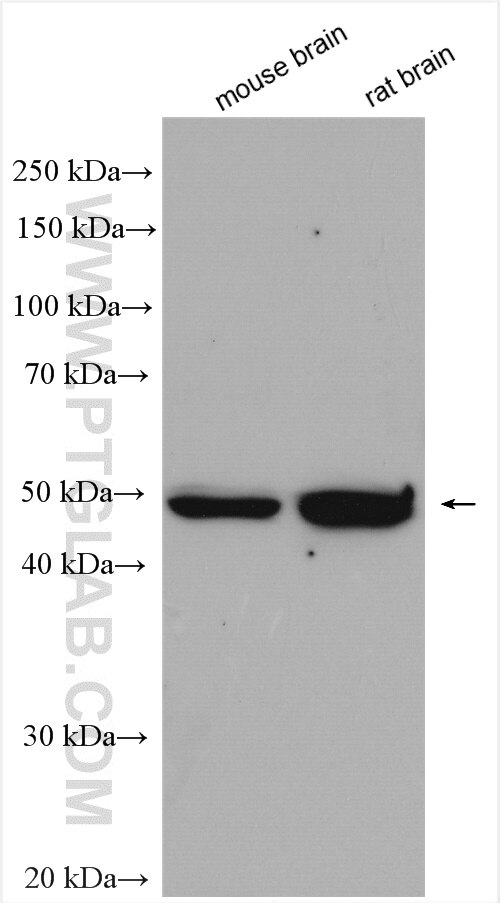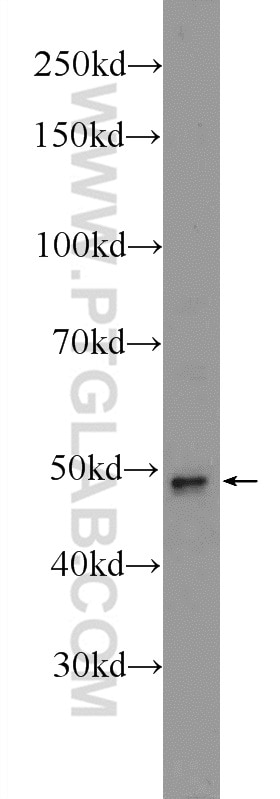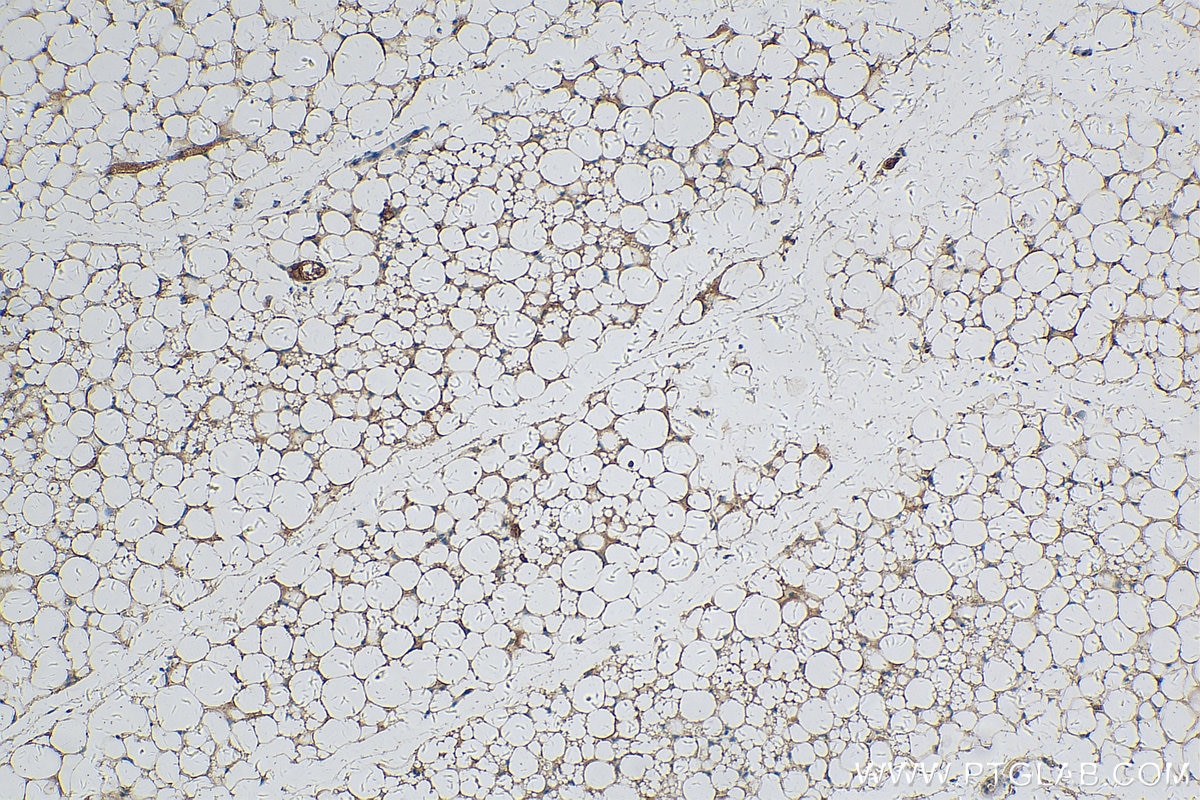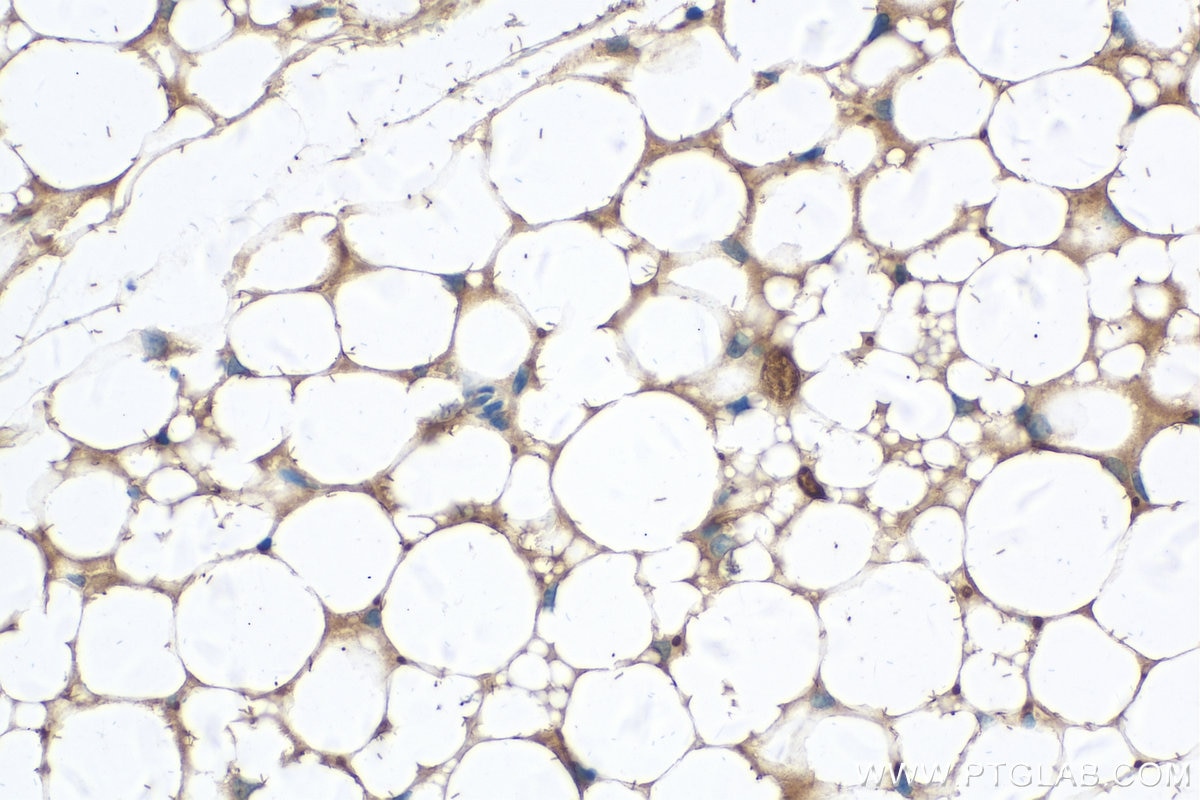Tested Applications
| Positive WB detected in | mouse brain tissue, 3T3-L1 cells, rat brain tissue |
| Positive IHC detected in | mouse brown adipose tissue Note: suggested antigen retrieval with TE buffer pH 9.0; (*) Alternatively, antigen retrieval may be performed with citrate buffer pH 6.0 |
Recommended dilution
| Application | Dilution |
|---|---|
| Western Blot (WB) | WB : 1:1000-1:4000 |
| Immunohistochemistry (IHC) | IHC : 1:250-1:1000 |
| It is recommended that this reagent should be titrated in each testing system to obtain optimal results. | |
| Sample-dependent, Check data in validation data gallery. | |
Published Applications
| WB | See 1 publications below |
Product Information
16127-1-AP targets CLMP in WB, IHC, ELISA applications and shows reactivity with human, mouse, rat samples.
| Tested Reactivity | human, mouse, rat |
| Cited Reactivity | human |
| Host / Isotype | Rabbit / IgG |
| Class | Polyclonal |
| Type | Antibody |
| Immunogen |
CatNo: Ag9111 Product name: Recombinant human ASAM protein Source: e coli.-derived, PGEX-4T Tag: GST Domain: 22-229 aa of BC009371 Sequence: EIKRVAEEKVTLPCHHQLGLPEKDTLDIEWLLTDNEGNQKVVITYSSRHVYNNLTEEQKGRVAFASNFLAGDASLQIEPLKPSDEGRYTCKVKNSGRYVWSHVILKVLVRPSKPKCELEGELTEGSDLTLQCESSSGTEPIVYYWQRIREKEGEDERLPPKSRIDYNHPGRVLLQNLTMSYSGLYQCTAGNEAGKESCVVRVTVQYVQ Predict reactive species |
| Full Name | adipocyte-specific adhesion molecule |
| Calculated Molecular Weight | 373 aa, 41 kDa |
| Observed Molecular Weight | 45-50 kDa |
| GenBank Accession Number | BC009371 |
| Gene Symbol | CLMP |
| Gene ID (NCBI) | 79827 |
| RRID | AB_2878221 |
| Conjugate | Unconjugated |
| Form | Liquid |
| Purification Method | Antigen affinity purification |
| UNIPROT ID | Q9H6B4 |
| Storage Buffer | PBS with 0.02% sodium azide and 50% glycerol, pH 7.3. |
| Storage Conditions | Store at -20°C. Stable for one year after shipment. Aliquoting is unnecessary for -20oC storage. 20ul sizes contain 0.1% BSA. |
Background Information
CLMP (Coxsackie- and adenovirus receptor-like membrane protein), also known as ACAM (adipocyte adhesion molecule) or ASAM, is a member of the CTX (cortical thymocyte marker in Xenopus) family of proteins. CTX family proteins are type I transmembrane proteins within the Ig superfamily that localize to junctional complexes between endothelial and epithelial cells and may play a role in cell-cell adhesion. CLMP is predominantly expressed in epithelial cells within different tissues and in the white adipose tissue. It may be involved in the cell-cell adhesion and may play a role in adipocyte differentiation and development of obesity.
Protocols
| Product Specific Protocols | |
|---|---|
| IHC protocol for CLMP antibody 16127-1-AP | Download protocol |
| WB protocol for CLMP antibody 16127-1-AP | Download protocol |
| Standard Protocols | |
|---|---|
| Click here to view our Standard Protocols |










